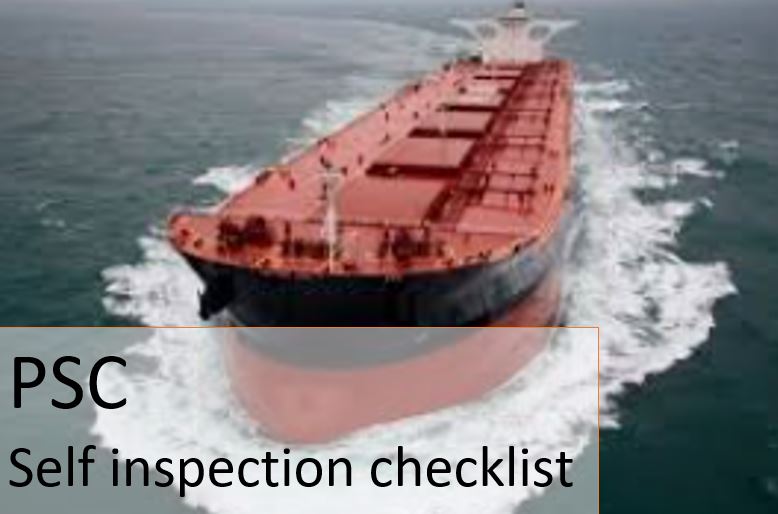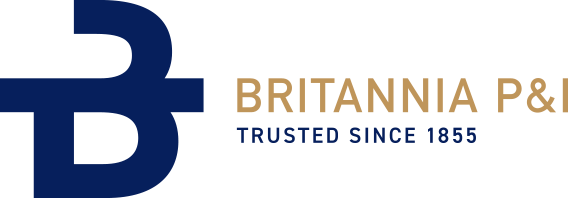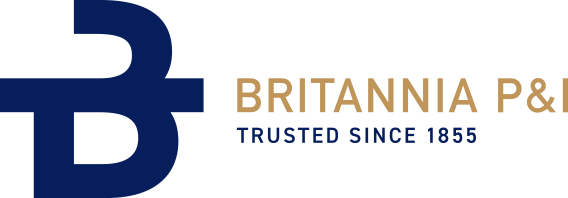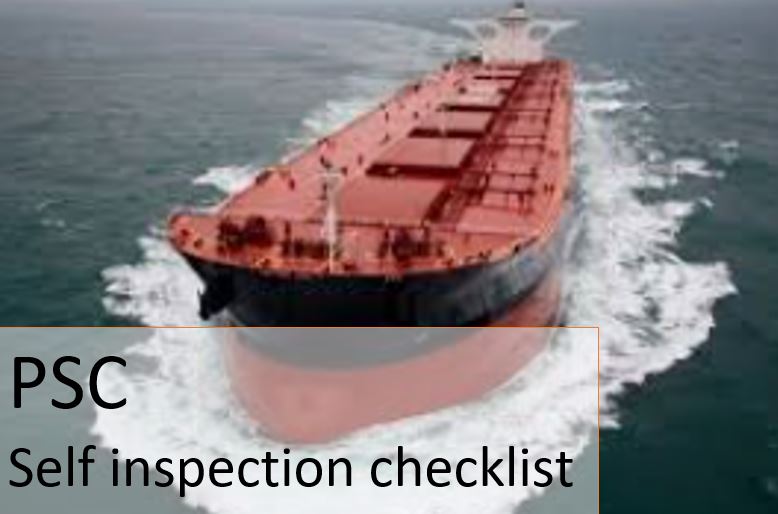Title Page
-
Site conducted
Condition Survey
-
Type of report
-
Ship Name:
-
IMO No:
-
Date survey completed
-
Location
-
Surveyor's name
-
Survey company:
-
Surveyor's ref. no.:
-
Order club:
- American Club
- Skuld
- Gard
- Swedish Club
- Britannia
- Japan Club
- London Steam-Ship
- North of England
- Shipowner’s
- Standard Club
-
Club ref. no.:
This report, and any accompanying documentation or photographs, has been compiled for the sole use of the Club for insurance purposes only and should not be disclosed to third parties without prior written permission from the Club. The information contained in this report, and any accompanying documentation or photographs, is not exhaustive as to the general condition of the ship and should not be relied upon by members or by any other party as any assurance, representation or warranty as to the condition of the ship and nothing herein shall prejudice the Club's rights under the insurance policy in the event of a dispute between the Club and the member relating to the condition of the ship.
Part A
1.Vessel's particulars
1.1 PARTICULARS
-
1.1.1 Ship's name:
-
1.1.2 Ex. names:
-
1.1.3 IMO No:
-
1.1.4 Flag state:
-
1.1.5 Builder:
-
1.1.6 Year built:
-
1.1.7 Class society:
- ABS- American Bureau of Shipping
- BV- Bureau Veritas
- CCS- China Classification Society
- CRS- Croatian Register of Shipping
- DNV GL
- IR- Indian Register of Shipping
- KR- Korean Register of Shipping
- LR- Lloyd’s Register
- NKK- ClassNK
- PRS- Polish Register of Shipping
- RINA
- RS- Russian Maritime Register of Shipping
- Non- IACS
-
If non-IACS class state classification body
-
1.1.8 Class notations:
-
1.1.9 Ship type & brief description:
-
1.1.10 GT:
-
1.1.11 DWT:
-
1.1.12 Last docking:
-
1.1.13 Last Class Renewal:
CREW MATRIX
-
Add rank
- Master
- Chief Mate
- Chief Engineer
- 1st Engineer
-
1st Engineer
-
Nationality
-
Certificate of Competency
-
Flag state endorsement
-
Years in rank
-
Years this type of vessel
-
Years at sea
-
Years with vessel operator
-
Chief Engineer
-
Nationality
-
Certificate of Competency
-
Flag state endorsement
-
Years in rank
-
Years this type of vessel
-
Years at sea
-
Years with vessel operator
-
Chief Officer
-
Nationality
-
Certificate of Competency
-
Flag state endorsement
-
Years this type of vessel
-
Years in rank
-
Years at sea
-
Years with vessel operator
-
Master
-
Nationality
-
Certificate of Competency
-
Flag state endorsement
-
Years in rank
-
Years this type of vessel
-
Years at sea
-
Years with vessel operator
2. CIRCUMSTANCES OF SURVEY
-
Describe in brief the circumstances under which the survey was carried out, such as, but not limited to, the date and the time the for the Club
-
* Not Applicable (NA) items and Not Inspected (NI) items (giving details of item number)
Details
-
2.1 Ship's trading pattern:
-
2.2 Cargo onboard and last three cargoes
-
2.3 Master's name:
-
2.4 Company name on the ISM DOC:
-
2.5 Name of owner's representative:
-
2.6 Time under present management
-
2.7 Ballast tanks inspected*:
-
If no, state reason tanks not inspected
-
If yes, state which tanks inspected
-
2.8 Cargo holds/tanks inspected*:
-
If no, state reason cargo holds/ tanks not inspected
-
If yes, state which cargo holds/ tanks inspected
-
2.9 Was a tightness test of hatch covers carried out?
- Yes
- No
- N/A
-
2.10 If yes, type of test carried out and equipment used:
-
2.10 State reason
3. EXECUTIVE SUMMARY
3.1 Survey summary
-
Following completion of the survey, and based on the surveyor's overall impression of the vessel, the surveyor is requested to rate the following areas (1=excellent 2=good 3=fair 4=poor 5=very poor) and provide remarks if rated Fair, Poor or Vey Poor on the reason/s why
-
Shipboard management:
-
Safety:
-
Fire safety:
-
Life saving appliances:
-
Pollution and environmental awareness:
-
Navigation:
-
Apparent structural condition:
-
Machinery:
-
Cargo worthiness:
-
Maintenance and housekeeping:
3.2 Surveyor's summary
-
Advise on the subject(s) which give rise to the most concern regarding safety of crew, vessel or cargo:
-
Surveyor's general comments and summary
-
Survey report enclosures- please upload Part D/List of Deficiencies and relevant documents.
PART B: 4. Survey Questionnaire - All Ship Types (Not Inc Tugs and Barges)
4.1 Class and Statutory Certificates
-
4.1.1 Are the relevant class and statutory certificates valid?
-
4.1.2 Are certificates without any conditions, recommendations, exemptions or memoranda affecting safety of life, ship, cargo or environment?
-
Additional information
4.2 Shipboard management (Section to be completed taking into consideration time under present management)
-
4.2.1 Are internal audits carried out at regular intervals and are they satisfactorily reported?
-
4.2.2 Are safety meetings carried out at a regular interval and a protocol kept?
-
4.2.3 Are non-conformity / accident / near accident reports raised and handled in a satisfactory manner?
-
4.2.4 Are Masters' Reviews carried out and satisfactorily reported?
-
4.2.5 Is a Planned Maintenance System (PMS) implemented and kept up to date?
-
4.2.6 Does the vessel have a Critical Equipment List as required by the ISM Code?
-
4.2.7 Is efficient access control in place?
-
4.2.8 Are there contingency plans onboard to deal with emergencies and spills, as applicable?
-
4.2.9 Is a muster list available, current and prominently posted in relevant areas?
-
4.2.10 Is an adequate emergency command structure in place?
-
4.2.11 Are fire control plans posted, properly maintained and also available externally?
-
Additional information
4.3 Crew
-
4.3.1 Are at least officers proficient in Maritime English to communicate efficiently?
-
4.3.2 If crew is multinational is there a common language understood by all?
-
4.3.3 Does the company have a briefing / de-briefing policy for Master/Chief Engineers prior to joining/after signing off?
-
4.3.4 Is random or specific drug and alcohol testing carried out?
-
Additional information
4.4 Safe Working
-
4.4.1 As observed, are safe working practices, including work permit procedures, implemented and adhered to?
-
4.4.2 Are portable oxygen and gas detection meters, appropriate to the vessel type and cargo, provided and regularly calibrated?
-
4.4.3 Is relevant personal protective equipment and clothing, appropriate to the vessel type and cargo, provided and in use?
-
4.4.4 Is adequate lighting provided throughout the vessel?
-
4.4.5 Are alarms from cold stores and freezers in apparent satisfactory condition?
-
4.4.6 Are walkways, stairways, catwalks, ladders, platforms and handrails, as applicable, in apparent satisfactory condition throughout the vessel?
-
4.4.7 Are mobile safety guards such as rails, lines and wires etc., provided and in use?
-
4.4.8 Are derricks, cranes and other lifting equipment properly maintained / marked? Have periodical inspections and testing been carried out?
-
4.4.9 Are accommodation / pilot ladders, gangway, etc. in apparent satisfactory condition?
-
4.4.10 Are the following Loss Prevention publications present onboard; Four (4) comic pamphlets, nine (9) comic safety posters, plus one additional poster applicable to bulk and general cargo ships?
-
Additional information
4.5 Hygienic Standard and House Keeping
-
4.5.1 Are crew galley and pantries clean and tidy? Is fitted equipment in apparent satisfactory condition? Are suitable food handling procedures in place?
-
4.5.2 Are provision and cold stores clean, tidy and maintained to correct temperature?
-
4.5.3 Is the general house-keeping standard, including sanitation, satisfactory?
-
Additional information
4.6 Fire Safety
-
4.6.1 Is the fire detection system in apparent satisfactory condition?
-
4.6.2 Are fire pumps, mains, hydrants and monitors in apparent satisfactory condition?
-
4.6.3 Are fire stations in tidy condition and is it evident that the firefighting equipment has been tested in connection with firefighting drills?
-
4.6.4 Are there sufficient self-contained breathing apparatus and spare bottles?
-
4.6.5 Are self-contained breathing apparatus in good condition sufficiently charged and cylinders within test date?
-
4.6.6 Are emergency escape sets provided?
-
4.6.7 Are fire extinguishers and fire hose lockers in apparent satisfactory condition?
-
4.6.8 Are fixed fire-extinguishing systems in apparent satisfactory condition with release instructions posted?
-
4.6.9 Are combustible and hazardous liquids stored in designated spaces and provided with Material Safety Data sheets?
-
4.6.10 Are acetylene and oxygen bottles stored in well ventilated and securely, signed designated places?
-
4.6.11 Are main and emergency exits clearly marked and unobstructed?
-
4.6.12 Is the fire integrity, including fire doors, fire dampers, shutters and bulkhead penetrations (where visible) throughout the vessel in apparent satisfactory condition?
-
Additional information
4.7 Life Saving Appliances
-
4.7.1 Are lifeboats, rescue boats and their davits, in apparent satisfactory condition?
-
4.7.2 Has the manufacturer or their approved representative serviced the on-load release?
-
4.7.3 Are life rafts and hydrostatic releases properly secured / fitted and in apparent satisfactory condition?
-
4.7.4 Are life buoys of approved type in various locations and in apparent satisfactory condition?
-
4.7.5 Are life vests of approved type, properly stowed and sufficient in numbers?
-
4.7.6 Is the medicine locker sufficiently stocked, tidy and in date?
-
4.7.7 Are signs for safety equipment in place marked with IMO symbols and instructions written in the working language of the vessel?
-
4.7.8 Are emergency escape route fluorescent markings fitted and in apparent satisfactory condition?
-
Additional information
4.8 Pollution Control
-
4.8.1 Are save-alls and spill containment arrangements in apparent satisfactory condition?
-
4.8.2 Is the vessel apparently free from any hull, bulkhead, valve or pipe-line leakage, including hydraulic lines, liable to cause pollution or affect safe operations?
-
4.8.3 Is the vessel provided with an approved SOPEP / SMPEP and, if applicable, a VRP?
-
4.8.4 Is sufficient oil spill clean-up equipment available as per the SOPEP / SMPEP Manual?
-
4.8.5 Is the Oil Record Book Part I (and, if applicable, Part II) properly filled out and up to date?
-
4.8.6 Are bunkering / oil transfer procedures in place, and if observed, adhered to?
-
4.8.7 Is oily water separator in apparent satisfactory condition, instructions posted and 15ppm monitor calibrated? Can vessel staff demonstrate how to display the electronic data history of the OWS if so equipped?
-
4.8.8 Is a Garbage Management Plan in place and is the Garbage Record Book up to date?
-
4.8.9 Are appropriate procedures in place for switch over to low Sulphur fuel when trading in relevant areas?
-
4.8.10 Is there an approved Ballast Management Plan on board and is the Ballast Water Record Book properly completed as appropriate?
-
4.8.11 What is the status of the ship’s implementation plan for compliance with the 0.50% SULFUR LIMIT UNDER MARPOL ANNEX VI by January 01, 2020? Note: The American Club Manager’s April 16, 2019 Member Alert advises “while there currently is no mandatory requirement to have an implementation plan, Port State Control authorities may likely take the status of any plan—or lack thereof—into consideration when verifying compliance after January 1, 2020, and recommends that “vessels have one in place, based on the template recommended in the Guidance”.
-
Additional information
4.9 Bridge, Navigation and Communication
-
4.9.1 Is bridge navigation and communication equipment in apparent satisfactory condition?
-
4.9.2 Is there an apparent working system in place to correct nautical charts and publications?
-
4.9.3 If applicable, have officers undergone an approved ECDIS training course? (What type of specific familiarization training have the officers undergone?)
-
4.9.4 If fitted, is the Bridge Navigational Watch Alarm System in apparent satisfactory condition?
-
4.9.5 If fitted, is the Voyage Data Recorder operational?
-
4.9.6 If VDR is fitted, is the Master aware of how to save and retrieve data in the event of an incident?
-
4.9.7 Are regular checks on VDR operation implemented and recorded to ensure that the complete dataset is being correctly recorded? Date of last check?
-
4.9.8 Are Bridge Procedures, Company and master’s Standing Orders in place and followed?
-
4.9.9 Are navigation lights in apparent satisfactory condition?
-
4.9.10 Is passage planning properly carried out and covering berth to berth?
-
4.9.11 Is emergency communication between bridge-engine room and bridge-steering gear room in apparent satisfactory condition?
-
4.9.12 Is external weather routing in use for ocean voyages?<br>(If external weather routing in NOT in use for ocean voyages please note a explanation in Section 2. CIRCUMSTANCES OF SURVEY)
-
4.9.13 Is the vessel's condition verified and recorded including trim, list, draft and intact stability?
-
Additional information
4.10 Hull and Deck
-
4.10.1 Is the visible condition of shell plating in apparent satisfactory condition?
-
4.10.2 Is the visible condition of deck plating in apparent satisfactory condition?
-
4.10.3 Are hull markings legible?
-
4.10.4 Are vents and air / sounding pipes on deck in apparent satisfactory condition with efficient closing devices and clearly marked with the compartment they serve?
-
4.10.5 Are deck wiring, piping and cable runs in apparent satisfactory condition?
-
4.10.6 Are hatch covers, coamings, stays and connections to deck plating free of cracks / heavy corrosion?
-
4.10.7 Are weathertight doors and stores hatches fully operational and in apparent satisfactory condition?
-
4.10.8 Are windlasses, winches, rollers, fair leads, capstans, bollards and mooring lines in apparent satisfactory condition?
-
4.10.9 Are satisfactory emergency towing arrangements in place and in apparent satisfactory condition?
-
4.10.10 Are suitable vessel specific emergency towing procedures in place?
-
4.10.11 Are visible sections of anchor cables in apparent satisfactory condition?
-
Additional information
4.11 Ballast Tanks & Void Spaces
-
4.11.1 Are tanks and void spaces inspected apparently free from significant wastage, pitting and scale?
-
4.11.2 Is the corrosion protection (coating / anodes) in apparent satisfactory condition?
-
4.11.3 Is the inspected steel structure apparently free from buckling / fractures / doublers / temporary repairs / poor alignment etc.?
-
4.11.4 Are manhole covers in apparent satisfactory condition?
-
4.11.5 Are tanks free from any sign of oil contamination?
-
4.11.6 Is pipe-work passing through tanks / void spaces in apparent satisfactory condition?
-
4.11.7 Are ballast valves (hydraulic / manual) and actuating systems, if appropriate, in apparent satisfactory condition?
-
Additional information
4.12 Machinery Spaces
-
4.12.1 Are engine compartments, including bilges, clean tidy and free from combustible materials, including oil soaked lagging?
-
4.12.2 Is main and auxiliary machinery in apparent satisfactory condition and free from significant oil or water leakages and/or temporary drains?
-
4.12.3 Is the engine monitoring and control system fully operational and regularly tested?
-
4.12.4 Is main switchboard protectively located and surrounded by non-conducting mat?
-
4.12.5 Is main switchboard earth fault monitoring equipment operational and indicating a satisfactory status?
-
4.12.6 Are self-closing devices of sight glasses on all oil tanks fully operational?
-
4.12.7 Are self-closing devices on engine room sounding pipes fully operational?
-
4.12.8 Are exhaust manifolds on machinery free from leaks and shielded with intact insulation?
-
4.12.9 Are FO / LO pipes and flanges adequately shielded?
-
4.12.10 Are FO / LO purifiers and FO heaters / LO coolers and filters in apparent satisfactory condition?
-
4.12.11 Are engine spares properly stored and secured?
-
4.12.12 Does there appear to be sufficient spare parts?
-
4.12.13 Are ER pipe systems, sea suction and overboard valves free from apparent deterioration, leaks, temporary repairs and cement boxes?
-
4.12.14 Are ER gratings in place secured and in a clean and safe condition?
-
4.12.15 Is the steering gear free from hydraulic leaks and in apparent satisfactory condition? Are instructions and equipment for emergency steering provided?
-
4.12.16 Are lube oil samples taken from main & auxiliary engines, all major engine room equipment, deck machinery and cranes for analysis at intervals not exceeding 3 months? Confirm that the test results show the criteria measured to be within acceptable limits.
-
4.12.17 Are all major engine room machinery items, deck machinery and cranes maintained within the Maker’s scheduled intervals? Review engine room management schedule (established PMS intervals) and current running hours to confirm that there are no long overdue jobs and overhauls of main & auxiliary engines and major engine room machinery items.
-
Additional information
Part C: 5. Survey Questionnaire - Bulk, General Cargo and Other
5.1 Cargo spaces - General
-
5.1.1 Are cargo hold coatings in apparent satisfactory condition and free from defects which could impair cargo worthiness?
-
5.1.2 Does the vessel have the necessary class and flag state certification for the intended cargo?
-
5.1.3 If fitted, is the fixed firefighting system in cargo spaces in apparent satisfactory condition?
-
5.1.4 Are bilge wells clean?
-
5.1.5 Are bilges regularly sounded and proper logs maintained?
-
5.1.6 Are bilges and water leakage alarms routinely function tested and results logged?
- Yes
- No
- N/A
- NI
-
5.1.7 Are bilge non-return valves routinely checked for operation? Review maintenance records to determine when and how they were checked..
-
5.1.8 Are manhole covers in apparent satisfactory condition?
-
5.1.9 Is the steel structure in the cargo spaces apparently free from defects (e.g. cracks, fractures, mechanical damage, deep pits, localized corrosion, heavy dents, doublers, scale etc.)?
-
5.1.10 Is the pipe work in the cargo spaces in apparent satisfactory condition and suitably protected against mechanical damage (e.g. air pipes, sounding pipes, bunker and ballast lines, etc.)?
-
5.1.11 Is natural and forced ventilation in cargo spaces in apparent satisfactory condition?
-
5.1.12 Are ladders and any permanent / temporary railings in apparent satisfactory condition?
-
Additional information
5.2 Lifting appliances
-
5.2.1 Are cranes / derricks in apparent satisfactory structural condition?
-
5.2.2 Is SWL clearly marked on crane / derrick jib and loose gear?
-
5.2.3 Are crane wires and sheaves in apparent satisfactory condition?
-
5.2.4 Are crane / derrick safety devices apparently operational and regularly tested?
-
5.2.5 Is slew bearing wear being regularly monitored, e.g. by grease sampling or rocking test?
-
5.2.6 Are the holding down bolts and slewing ring apparently free of significant corrosion?
-
5.2.7 Is loose gear apparently free from excessive wear and corrosion?
-
5.2.8 Are crane / derrick electrical / hydraulic systems in apparent satisfactory condition?
-
5.2.9 Are crane access ladders and platforms in apparent satisfactory condition and allow for safe access?
-
5.2.10 Are lifting appliance maintenance records kept?
-
Additional information
5.3 Cargo securing
-
5.3.1 Are cell guides, if fitted, in apparent satisfactory structural condition?
-
5.3.2 Are fixed lashing points and timber deck stanchions in apparent satisfactory condition and free from excessive wear / corrosion? (e.g. twist lock sockets, D-rings, timber stanchions)
-
5.3.3 Is loose lashing and securing equipment including twist locks in apparent satisfactory condition and free of excessive wear / corrosion?
-
5.3.4 Are the twist locks, lashing and securing equipment of the same type and number as specified in the approved Cargo Securing Manual?
-
5.3.5 Are lashing equipment maintenance records kept?
-
5.3.6 Are electrical container sockets in apparent satisfactory condition?
-
5.3.7 Is electrical power supply permanently installed from the engine room?
-
5.3.8 If reefer containers are carried, are spare parts carried on board?
-
5.3.9 Is there an appropriate procedure for monitoring reefer container temperatures?
-
Additional information
5.4 Safety and Operational tests
-
5.4.1 Engine room bilge high level alarms tested satisfactorily?
-
5.4.2 Emergency fire pump with two fire hoses on separate hydrants tested satisfctorily?
-
5.4.3 Emergency power sources and emergency lighting tested satisfactorily?
-
5.4.4 Engine room remote stops and shutdowns tested satisfactorily?
-
5.4.5 Cargo hold bilge suction testing and non-return functionality tested satisfactorily and are strum boxes/strainers fitted and in good condition in the bilge wells?
-
Additional information, observations, type and condition of strum boxes / strainers
-
5.4.6 Hydro testing of ALL ballast spaces surrounding cargo have been satisfactorily carried out with no leaks detected? Overflow of ballast tanks to apply a head of pressure is preferred but if this is not possible due to operational or Port regulations an acceptable alternative is to ensure that the tanks are completely full and check for leaks.
-
Additional information, observations, tank numbers that were not tested or adjacent cargo spaces that could not be inspected.
-
5.4.7 Water ingress alarm unit for cargo spaces tested satisfactorily?
-
Additional information
Part C: 6. Hatch covers
6.1 Hatch Covers
-
Has a weather tightness test of hatch covers been carried out?
-
State the type of weather tightness test- ultrasonic test is required unless otherwise agreed with the club.
- Ultrasonic
- Hose test
- Chalk
-
6.1.1 Hatch Nos (from forward) tested?:
-
6.1.2 Hatch type?
-
6.1.3 Ultrasonic equipment type: Transmitter, receiver, and date equipment last calibrated:
-
6.1.4 Initial measurements with open hatch? (Minimum preferred OHV is 40dB). Open hatch value, OHV, and 10% of OHV (dB):
-
6.1.5 Are the hatch covers in weather-tight condition?<br><br>In accordance with the pass/fail criteria generally adopted by IACS: If the dB reading is more than 10% of OHV the hatch cover is not considered weather tight and corrective action needs to be taken.
-
6.1.6 List measurements with reading > 10% OHV. State hatch no., approximate location, dB reading, and comments.
-
6.1.7 Surveyor's remarks regarding hatch covers and weather tightness test
-
6.1.8 Upload image of hatch cover drawing for each hatch cover tested with relevant information such as: Location of linear and spot leaks with measurements. Schematic drawing with cross joints number of pontoons, ventilation, drains, and access hatches etc. Drawing/ image to be marked with hatch cover number (counting from fwd.) and OHV. Images reflecting the general condition of hatch covers and parts to be included.
-
6.1.9 Are all cargo hatch covers and coamings, including landing pads, in apparent satisfactory structural condition?
-
6.1.10 Confirm no apparent indications of water or oil leaks in the cargo holds?
-
6.1.11 Are access hatches and coamings in apparent satisfactory condition?
-
6.1.12 Are hatch cover panels apparently correctly aligned?
-
6.1.13 Are compression bars, landing pads, cleats and cross joint wedges in apparent satisfactory condition and properly adjusted?
-
6.1.14 Are rubber gaskets in apparent satisfactory condition? Are any repairs correctly performed (paying particular attention to corner pieces)?
-
6.1.15 Are side and cross joint drain channels and non-return devices in apparent satisfactory condition?
-
6.1.16 Can hatch covers be closed / opened with undue delay?
-
6.1.17 Is the chain pull / hydraulic system in apparent satisfactory condition?
-
6.1.18 Are hatch cover hinges in apparent satisfactory condition?
-
6.1.19 Can main and access hatch covers be safely secured in the open position?
-
6.1.20 Is a Hatch Cover Manual onboard and in a language understood by the crew? State hatch cover manufacturer.
-
6.1.21 Are hatch covers without any signs or remnants of Ramnek tape, foam, or use of other extra sealants?
-
Additional information
Signatures
-
Master's signature: (For receipt only)
-
Surveyor's signature












